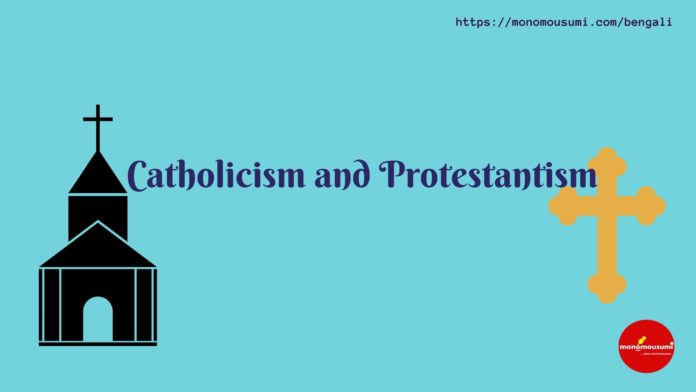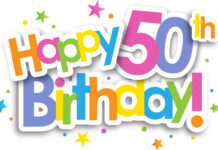Although Christianity was born a little over 2000 years ago, its impact could still be felt today in everywhere from the Americas to the far east. Almost 2.4 billion people around the world call themselves Christians, dividing themselves between three main sects: Catholicism, Protestantism, and Christian Orthodoxy. While all sects have historically played a crucial role in Christianity’s development as a religion, it’s the former two that have shaped the modern Christian world as we know it. Despite their similarities, both have fundamental differences that are at the heart of past and current inter-sect hostilities, from the times of the Protestant Reformation of the 1500s all the way to the 21st century. Taking into consideration the underlying sensitivity of this topic, I’ll try my best to compare both religious sects as fairly as possible in this essay.
From a historical perspective, the Christian tradition began with the ministry of Jesus of Nazareth, who was a Jewish preacher from 1st century A.D. Judea that eventually came to abhor and challenge the Temple aristocracy. Although he lived his life honoring Jewish laws and traditions, his criticisms of the Temple’s conduct and immense popularity amongst the people worried the Jewish authorities, and he was soon arrested and convicted of blasphemy (Every Student, 2021). Thereafter his case was handed over to the Roman prefect Pontius Pilate, who condemned Jesus to crucifixion after much pressure from the Jewish leaders and frenzied mobs. To many Christians (Bethune, 2017), the crucifixion of Christ perfectly captured God’s unconditional love and his willingness to sacrifice his own son for humanity’s sins.
From there, Jewish Christians (early Christians), known also as “Hellenists”, were eventually driven out of Judea, wherefrom Jesus’ teachings were allowed to spread (Smitha, n.d.). As Judeo-Christian law became more relaxed, more gentiles[1] converted to Christianity, and Jesus’ apostles and followers established churches all over the Roman Empire. Various sects would emerge within this religion but the two main ones at the time were the Roman Catholic Church and the Eastern Orthodox Church, which separated because of the Great Schism of the 11th century. Although this schism was significant in its impact, it wasn’t the last major one. In the early 16th century, a German monk by the name of Martin Luther voiced his grievances against the Roman Catholic Church, giving birth to what would be known as Protestantism. His rejection of papal authority and the practice of selling indulgences gave way to the Protestant Reformation in 1517, which, along with the invention of the printing press, contributed to the dissemination of his reformist ideology (Harvey, DeVries and Gordon, 2009).
Then, Europe was rattled by 2 centuries of religious fighting, which culminated with the Thirty Years’ War of the 17th century, resulting in approximately 8 million casualties (Cerda, 2018). Although the Catholic-Protestant conflict has gradually ebbed over the course of the following centuries, it didn’t disappear completely. As is the case in Northern Ireland, religious nationalism and unresolved theological/political disputes have contributed to the tense relationship that continues to exist between Catholics and Protestants, both of whom have vied for more power and influence (Knispel, 2021). Needless to say, this conflict – or any religious conflict for that matter – is deeply problematic, and it’s utterly important that we understand the disputes at its root.
Perhaps the most significant point of conflict between Catholics and Protestants is over their differing views on the doctrine of Sola Scriptura, which views the Christian Scripture as the only legitimate source of authority for Christians to follow. While Protestants embrace this doctrine, Catholics believe in Prima Scriptura – meaning they believe that both the Christian Scripture and oral traditions are authoritative, although to different degrees (Truth, n.d.). That’s why, for example, Catholics have 7 sacraments when Protestants only accept 2. To Protestants, the Bible was very clear in its commands in Matt. 28:18–20 and Luke 22:14–20, requiring two sacraments only: baptism and communion [the Lord’s Supper] (Sproul, n.d.). Catholics, on the other hand, strictly adhere to Roman Catholic traditions, which have come to include 5 additional sacraments to the list.
Furthermore, the question of religious authority has been yet another point of conflict between both sects. Catholics accept the Pope as the apostolic successor of Peter, Jesus’ apostle, who is said to have laid down the foundation of the Roman Catholic Church (Crow, 2018). Within the church itself, a rigid hierarchy is in place, with all priests, bishops, deacons, etc. having to answer to the Papal authority in the Vatican. Protestants, on the other hand, completely reject the Pope’s infallibility and authority and operate on a more regional, less centralized basis, with every individual church being headed by a few clergymen at most and that’s it. This localization of churchly leadership stems mainly from Protestantism’s tense history with the highly-centralized Roman Catholic Church, which made so many Protestants skeptical of granting a single body the right to absolute religious authority.
Despite sharing core Christian beliefs such as the holy trinity, both sects disagree on major theological points. For instance, although Catholics believe that the Purgatory is a component of the afterlife, most if not all Protestants deny its existence (Crow, 2018), mainly due to a lack of biblical proof and a whole host of theological arguments. Also, communion, although done almost similarly as it looks from the outside, symbolizes different things depending on who you ask. While Catholics believe that the bread and wine physically turn into the body and blood of Christ during communion, Protestants see this act as a memorialization of Christ’s death (BBC editor(s), n.d.). Moreover, Catholics follow a strict criterion with regard to salvation: to them, baptism is a necessary precondition. Conversely, Protestants believe that faith alone is enough for salvation. Although there are so many more differences, I’ll end it with their differing views on Mary, Jesus’ mother. It’s a firmly established belief amongst Catholics that Mary was perpetually a virgin after the birth of Jesus, which contradicts the Protestant belief that she came to give birth to other children subsequently.
In conclusion, while both sects and faith systems share fundamental tenets, they deeply differ in areas of theology and rituals. Among these differences are their clashing views on Papal supremacy, oral traditions, and scriptural authority. Also, their disagreements over transubstantiation, the requirements for salvation, and other key religious concepts. These differences, although seemingly insignificant, have been the source of much controversy and friction between the two sects, sometimes resulting in bloody wars that fractured the Christian community even more. Most interestingly, in my opinion, we’ve also been able to see how the rebellious ministry of a certain Jewish preacher came to completely reshape the world, giving birth to one of the most important religions around the world.
By Ali Mukhtar Mansoor Ali
















